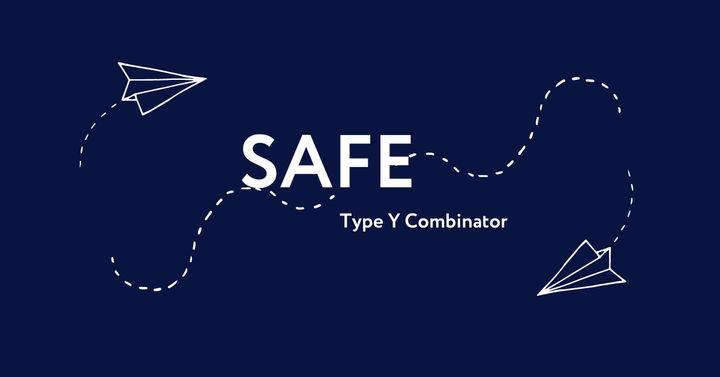SeedBlink Blog
all Things Equity
Introduction to SAFE financial instrument & how it works
The need for new security types has become apparent in recent years, as investment instruments have matured. To meet this need, the industry has turned to modifying existing security types to make them more friendly. As a savvy investor, it’s important to understand these new security types and how they work.
Recently, we went on our blog over the convertible note. Another security type that you may encounter is the SAFE type Y Combinator.
Both a SAFE and a convertible note allow companies to raise money while putting off a decision on valuation and determining how much equity the investor is getting. The SAFE or notes will convert into equity if and when the start-up raises its first priced round, presumably at a time when it will have actual metrics to determine a fair valuation. Unlike a convertible note, a SAFE doesn’t command interest and has no maturity date.
While a convertible note is first and foremost (accounting included) a loan, a SAFE is a “not-priced” equity acquisition. A lot of legal and accounting differences come out of this subtle note.
What is the SAFE investment instrument?
A SAFE is an investment contract between a start-up and an investor that gives the investor the right to receive equity of the company on certain triggering events, such as a:
⦿ Future equity financing (known as a Next Equity Financing or Qualified Financing), usually led by an institutional venture capital (VC) fund.
⦿ Sale of the company.
The price of the equity that the SAFE holders receive on conversion is lower than the price of the securities issued to VC investors in connection with a Next Equity Financing, based on either a:
⦿ Discount rate.
⦿ Valuation cap.
SAFEs have all the same conversion features but lack the debt hallmarks of convertible notes. In particular, a SAFE has no:
⦿ Maturity date. Until a conversion event occurs, SAFEs remain outstanding indefinitely.
⦿ Accruing interest. Investors receive only a right to convert their SAFEs into equity at a lower price than the investors in the subsequent financing (based either on the discount or valuation cap in their SAFEs).
Things to keep in mind about SAFE Securities
⦿ SAFE offers simplicity by minimising terms - A SAFE is a 5-page document that was created to streamline the seed investment process. Because simplicity is one of its primary goals, SAFE offers a straightforward option: SAFE doesn’t carry an interest rate and doesn’t have a maturity date.
⦿ They are not common stock - When investing in a SAFE, you are an investor, but you are not an actual stock shareholder. (Unless the company converts the SAFE into stock). For you to receive any shares in the company, the terms of the SAFE must first be met through the triggering event.
⦿ Conversion to equity only happens if triggering events occur - A SAFE only allows for a conversion into the next round of financing. The triggering event could be a merger or acquisition, additional funding, or an initial public offering.
⦿ A SAFE conversion may never be triggered - Depending on the terms of the SAFE, there is the possibility that the conversion event is never triggered. If the triggering event doesn’t happen, you could lose your entire investment.
⦿ Use caps as your guide - A cap is a way for note or SAFE holders to protect themselves against the dilution that would come from a start-up raising a priced round at a high valuation, basically locking in a minimum future equity stake. They’re useful for understanding how much a SAFE or a note will impact dilution.
⦿ Exit mechanism - If you're looking for an early exit, convertible notes and SAFE offer similar pay-out mechanism in the event of a change in control (acquisition/IPO) before a conversion can occur. The SAFE is written to give the investor the choice of a 1x payout or conversion into equity at the cap amount to participate in the buyout. If the issuer is unsuccessful and dissolves the business before there is a liquidity event, SAFE holders may receive their investment back (without interest) prior to any distribution to company stockholders, if cash is available for that purpose
⦿ Voting rights - unlike current equity stock in a company, SAFE do not give investors voting rights in the company.
As the terms are customisable, they will vary from company to company. This means that it’s critical you do your own due diligence to fully understand the company’s disclosure on the SAFE they’re offering as wells as the terms they outline in the agreement before making an investment.
SAFEs were developed in Silicon Valley by start-up incubator Y Combinator as a way for venture capital investors to quickly invest in hot start-ups without burdening them with the more laboured negotiations an equity offering may entail. The various mechanisms of the SAFE, from the triggering events to the conversion terms, were designed to best operate in the context of a fast-growing start-up likely to need and attract additional capital from sophisticated venture capital investors.
SAFE on Seedblink
The first start-up that chose SAFE instrument for its listing on Seedblink was Plant an App, followed by OVEIT. Discover their company profile and financial info on their dedicated campaign pages.
Join our newsletter
Your go-to source for European startup news, equity trends, VC insights, and investment opportunities.
